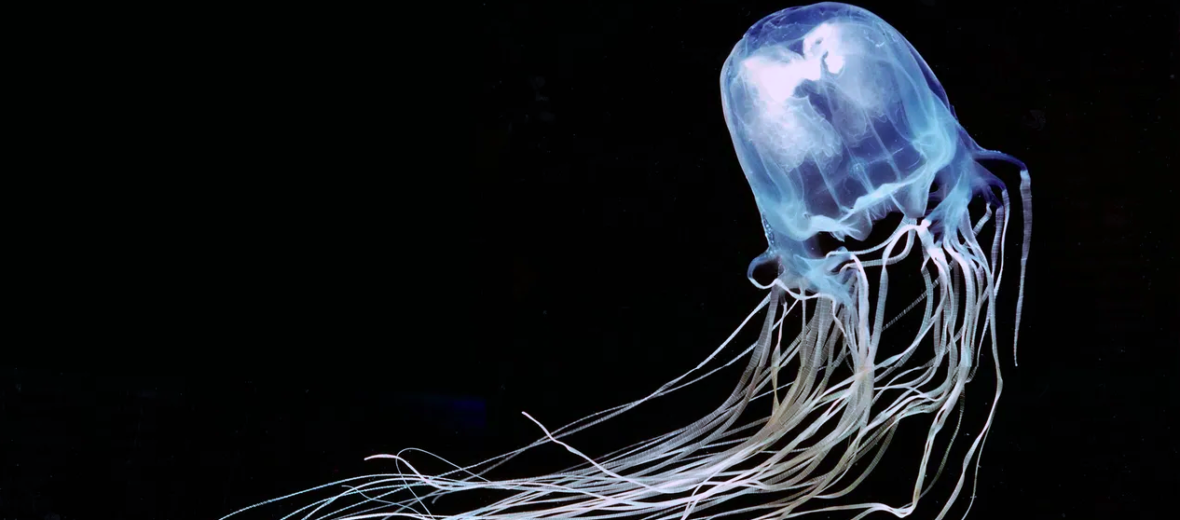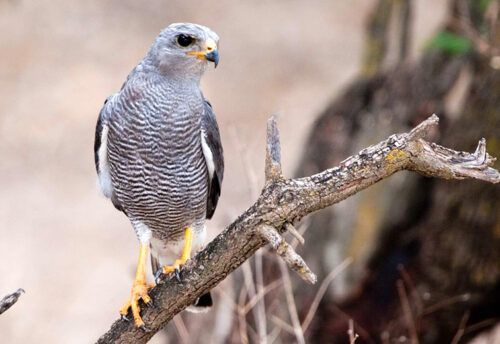
The great barrier reef… Home of beauty and wonder. Also the home to one of the most dangerous animals in nature, the box jellyfish! Box jellies are small in appearance but pack a highly venomous punch capable of death by heart attack due to sheer pain. There are approximately 51 known species of box jellies and all are here to make your life miserable, if you so much as brush against them. They can be found in the Atlantic and Pacific Oceans, as well as the Mediterranean Sea.
First the Stats…
Scientific name: Cubozoa
Length: Up to 8 inch bell (body), up to 9 foot tentacles
Lifespan: Up to 8+ months
Now on to the Facts!
1.) The venom from the big box jellyfish’s nematocysts, located in just 6 feet of tentacle is painful enough to cause a person to die from a heart attack!
2.) The box jelly has approximately 800,000 stinging organelles for every 1/3 of an inch! Some have tentacles that can reach up to 9 feet long.
3.) The big box jellyfish is the most venomous jellyfish on the planet.
4.) Symptoms of a sting include headaches, rapid heart rate, agitation, vomiting, extensive sweating, and extremely high blood pressure. This is known as Irukanji Syndrome. Once envenomated, there is no cure or pain relief. You have to endure it till it fades.
5.) Even though all jellyfish are venomous, this one tops the charts. The pain experienced by a stinging incident is excruciating and can be lethal!
But wait, there’s more on the box jellyfish!
6.) The big box jelly has 24 eyes. These eyes are on the inside of their bell (body).
7.) Jellies are diurnal (active during the day).
Did you know…?
The box jellyfish can reach speeds of up to 4.6 mph.
8.) These critters only live for about 8+ months. This lifespan is steadily increasing as global ocean temperatures rise, due to global warming.
9.) Due to global warming, jellyfish are also becoming more prolific, worldwide.
10.) A big box jellyfish can lose up to 30% of its bodyweight in about 24 hours if it doesn’t eat. They eat about 2 – 3 times a day.
But wait, there’s still more on the box jellyfish!
11.) Sea turtles are the only known box jelly predators. Another jellyfish predator is the blue sea dragon.
Did you know…?
Their venom causes cells to become porous enough to allow potassium leakage, this causes hyperkalemia, which can lead to cardiovascular collapse and even death in as quick as 2 – 5 minutes!
12.) Vinegar isn’t always the answer to jellyfish stings. Vinegar can deactivate stinging organelles that haven’t fired off venom yet. However, if the organelle has already fired then the use of vinegar causes it to squeeze out even more venom!
13.) Lasting large red welts are left behind, after a stinging incident.
14.) Since the late 1800s there have been 79 recorded fatalities at the hands of the box jelly.
Now a Short Box Jellyfish Video!
Also, check out the Critter Science YouTube channel. Videos added frequently!
Want to suggest a critter for me to write about? Let me know here.



